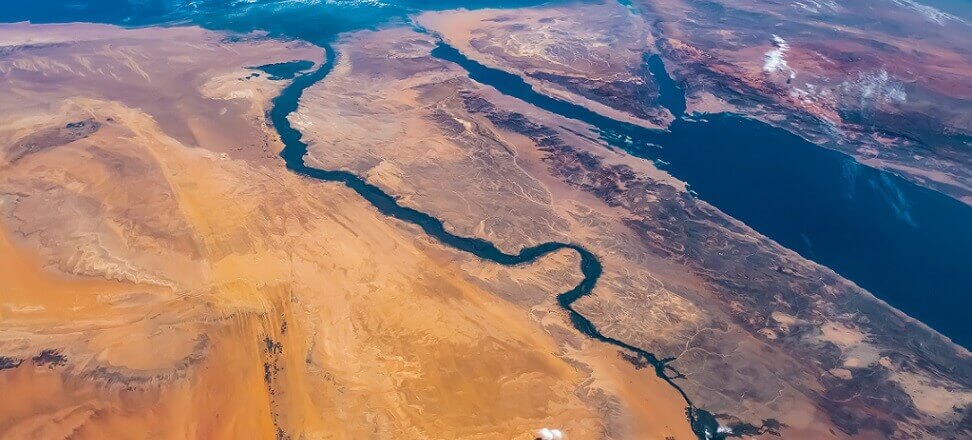Rivers are ecosystems that provide not only a valuable source of water and habitat for many organisms, but also fantastic tourist destinations with beautiful views. Are the world’s longest rivers also the most unique? The Nile, traditionally considered the world’s longest river, still competes for the title with the Amazon. A large group in the compilation are examples from Asia. Let’s see what else, besides length, distinguishes the rivers in the list.
The longest rivers in the world – determining the length of a river
Rivers are streams of water that flow in a channel gouged by erosion. Along these natural surface watercourses, the world’s greatest civilizations were once built. Freshwater rivers are used by people as sources of drinking and irrigation water, places to establish habitat, a means of transportation or a source of energy.
In order to identify the longest rivers in the world, it is necessary to determine their length, and the process is quite complicated. This needs information on the exact location of the source and the location of the river’s mouth – its beginning and end. The inclusion of the river’s tributaries and channels can make things even more difficult. With the natural phenomenon that rivers change their length and shape over the years, it doesn’t make the task any easier either. For this reason, the length of a river is not something easy to grasp, and therefore the reported values vary and are not always accurate.
The longest rivers in the world – a list
Here are the longest rivers in the world:
1. the Nile, length: 6650 km
The Nile, although debatable, is considered the longest river in the world. It has a length comparable to Amazon, but the 2009 study. showed that it is slightly longer and measures 6650 kilometers. It is an important economic river, supports agriculture and fishing, and provides a habitat for many animals, including hippos and Nile crocodiles. Its water resources are shared by eleven countries – Tanzania, Uganda, Rwanda, Burundi, Democratic Republic of Congo, Kenya, Ethiopia, Eritrea, South Sudan, Sudan and Egypt.
2. the Amazon, length: 6400 km
The Amazon is considered the second longest river in the world. It flows through Brazil, Colombia, Peru and flows into the Atlantic Ocean. Cruises and boat trips on the Amazon encourage travelers to discover the natural biological abundance of the rainforest. Thousands of species of fish, rare Amazonian dolphins, otters, manatees or anacondas can be found in the waters of the Amazon.
3. the Yangtze River, length: 6,300 km
The Yangtze is the longest river in Asia, plus the longest lying within the borders of a single country. It is China’s main source of water and an important tourist site. Some 400 million people live along its shores. The Yangtze is also the unofficial border between northern and southern China. River cruises, along the scenic Three Gorges region, are an ideal way to enjoy the amazing landscapes of this beautiful part of China.
4. the Mississippi, length: 6275 km
The Mississippi system supplies water to 31 US states and 2 Canadian provinces. The river flows through (from north to south): Minnesota, Wisconsin, Iowa, Illinois, Missouri, Kentucky, Tennessee, Arkansas, Mississippi and Louisiana, before flowing into the Gulf of Mexico. Its vast delta is home to a rich wildlife ecosystem, with a wide variety of migratory birds, reptiles and amphibians.
5. the Yenisei, length: 5539 km
Fifth by length is the Yenisey, which flows through Mongolia and Russia until its mouth in the Kara Sea, part of the Arctic Ocean. The river is a source of energy, food and a mode of transportation for many remote Siberian communities, such as the Ket and Yugh peoples. The Yenisei is also home to a herd of Taimyr tundra reindeer, which congregate at its shores in winter, forming the largest such concentration in the world.
6. the Yellow River, length: 5464 km
The Yellow River, or Huang He, gets its name from the yellow dust that gives it its color, which washes up from the Lesser Highlands. Like the Yangtze, the Yellow River is entirely within China. It is called the “cradle of Chinese civilization” because of the key role it played in the development of the country’s culture. There are several large dams and power plants on the river, and its waters are home to some 160 different species of fish.
7. ob-Irtysh, length: 5410 km
It flows through most of Russia, eventually flowing into the Arctic Ocean. Formed by the merger of the Ob and Irtysh rivers, the river is frozen for half the year due to its location in the climate of western Siberia. The countries it flows through are Russia, Kazakhstan, China and Mongolia.
8. Rio de la Plata-Paraná-Rio Grande, length: 4880 km
It is the length of the connected and overlapping Paraná, Rio Grande and Uruguay rivers. The Rio de la Plata alone is only 290 kilometers long, but as a whole, including tributaries, it is much longer. Composed of its tributaries, the river runs from north to south through Brazil, Bolivia, Paraguay, Uruguay and Argentina. It flows into the Atlantic Ocean between Argentina and Uruguay. It is also the widest river in the world, at its eastern end opening up in the shape of a bay.
9th Congo, length: 4700 km
The Congo is up to 220 meters deep, making it the deepest river in history. It flows through nine countries: Democratic Republic of Congo, Central African Republic, Angola, Republic of Congo, Tanzania, Cameroon, Zambia, Burundi and Rwanda. Before it falls into the Atlantic Ocean, it crosses the equator twice.
10. amur, length: 4444 km
The Amur begins its course in Mongolia and flows eastward, forming the border between the far east of Russia and northeastern China. The Chinese Heilong Jiang can be translated as “river of the black dragon,” while the word amur is said to come from the term “water.” Living in the Amur, the puddle can reach a length of up to 5.6 meters.
The world’s longest rivers – ecosystems vulnerable to climate change
Aquatic ecosystems are vulnerable to the increasingly severe effects of climate change, making rivers even more vulnerable today. As temperatures rise, changes in the amount of rainfall or severe storms, water quality deteriorates and the risk of catastrophic flooding increases. More frequent and severe storms increase runoff from urban and agricultural areas, carrying pollutants into nearby rivers. In order to reduce the rate of climate change, we should engage in strategies that protect freshwater and increase its resilience to change as soon as possible.

 Polski
Polski






